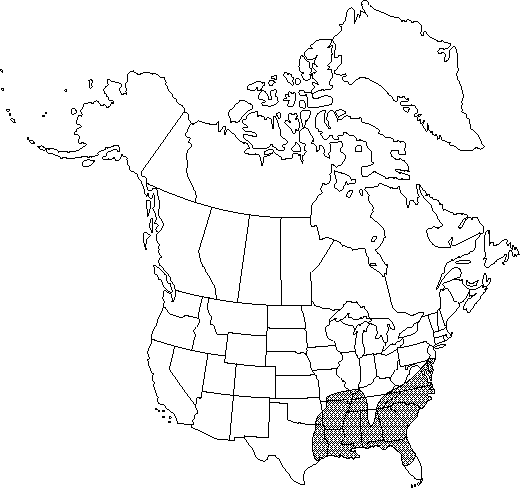Carpinus caroliniana subsp. caroliniana
Trees, to 8 m; trunks short, crooked, shallowly fluted, crowns open, spreading. Bark steel gray or brownish gray, smooth to somewhat roughened. Winter buds containing inflorescences squarish in cross section, 3–4 mm. Leaf blade narrowly ovate to oblong-ovate, 3–8.5(–12) × 3–6 cm, base narrowly rounded to cordate, margins doubly serrate, apex acute or obtuse; surfaces abaxially slightly to moderately pubescent, especially on major veins, without small dark glands. Infructescences 2.5–7 cm; bracts relatively uncrowded, 2–3 × 1.4–2.3 cm, lobes narrow, elongate, apex acute, obtuse, or rounded.
Phenology: Flowering late spring.
Habitat: Stream banks, flood plains, and moist slopes, frequently in understory
Elevation: 0–200 m
Distribution

Ala., Ark., Del., Fla., Ga., Ill., Ky., La., Md., Miss., Mo., N.J., N.C., Okla., S.C., Tenn., Tex., Va.
Discussion
Carpinus caroliniana subsp. caroliniana is characteristic of the southern Atlantic and Gulf of Mexico coastal plains and also extends northward in the Mississippi Embayment. It differs from C. caroliniana subsp. virginiana in its smaller, more ovate, more acute-tipped leaves that have finer secondary teeth and lack conspicuous dark glands abaxially.
Selected References
None.